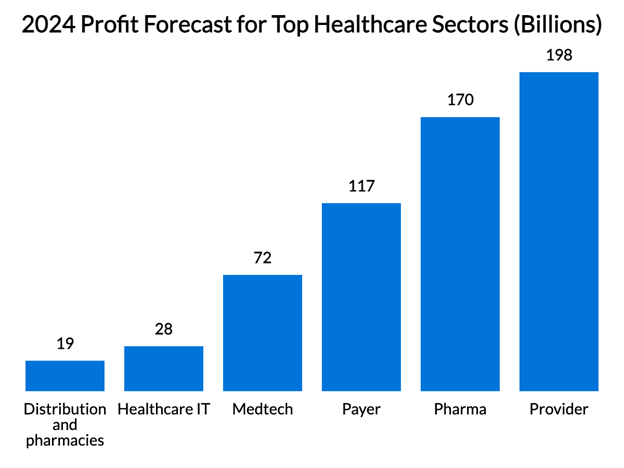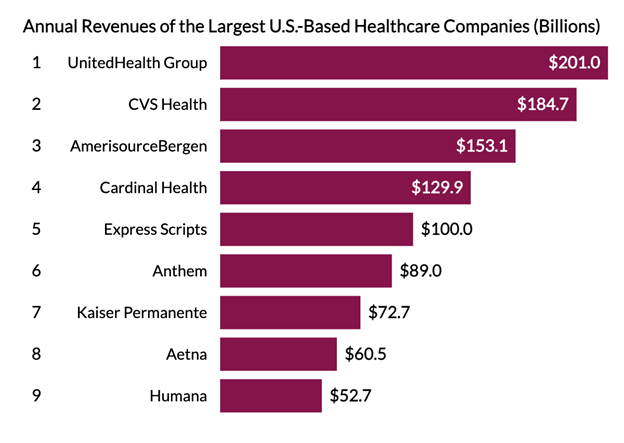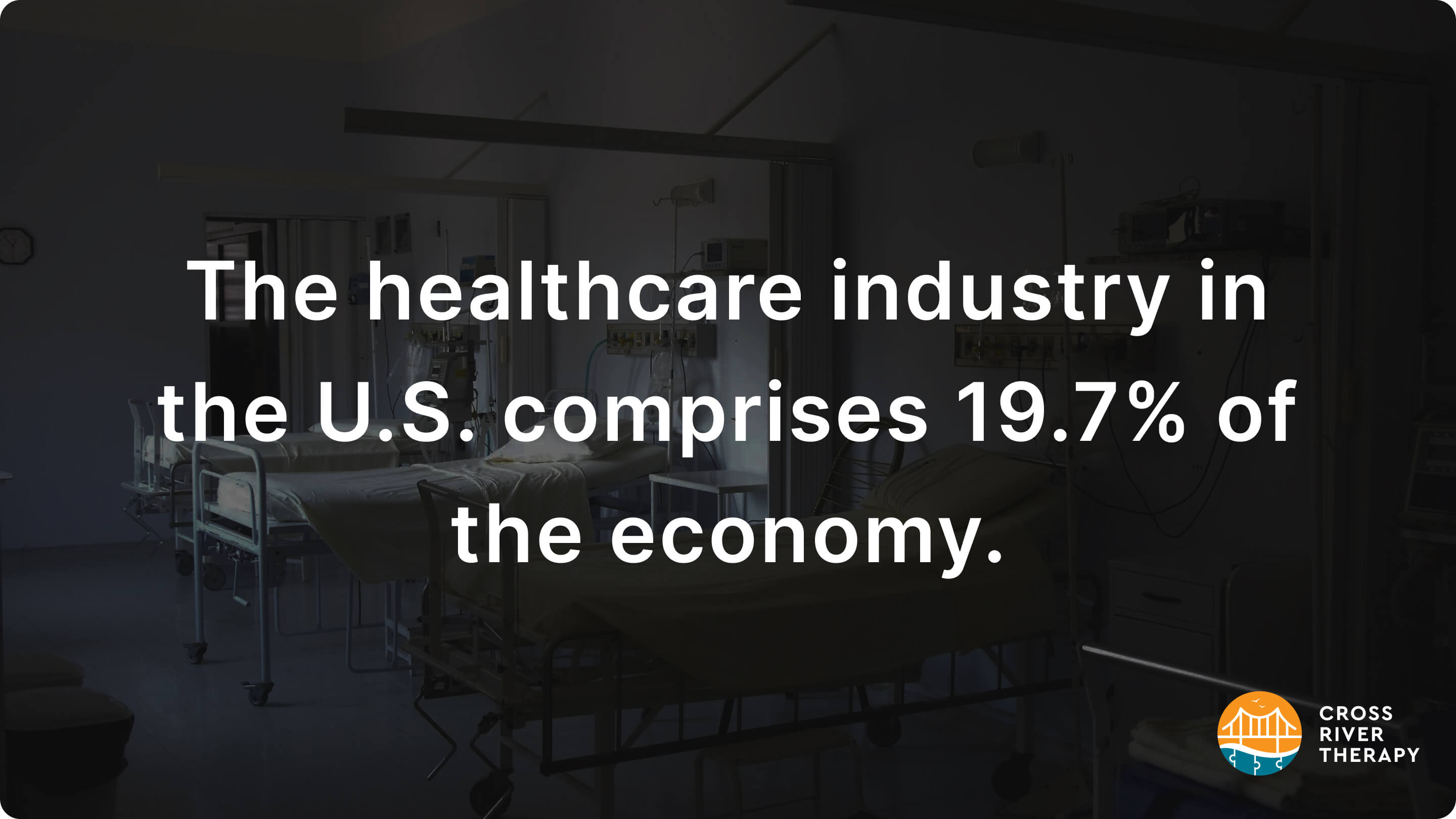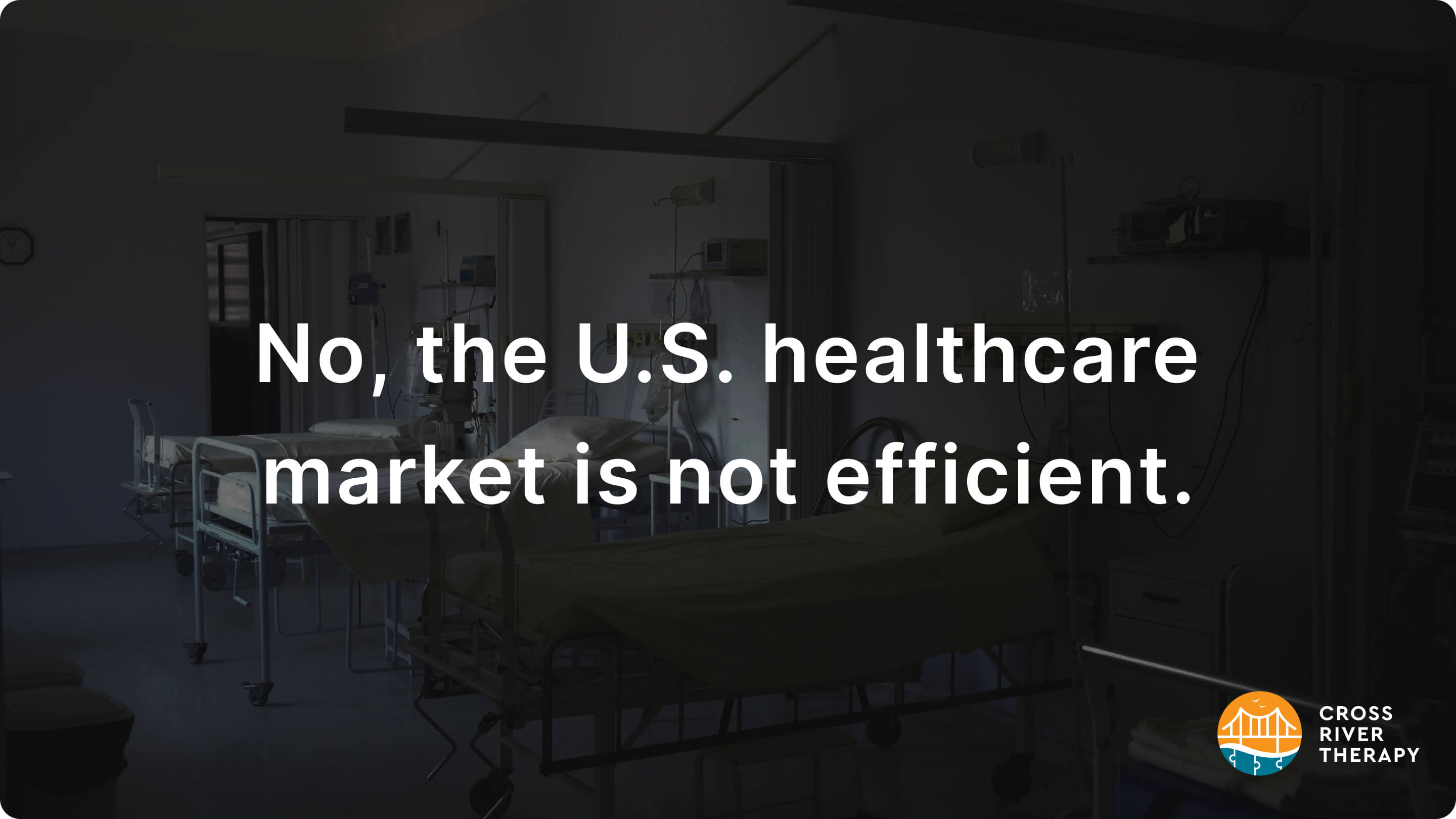39 U.S. Healthcare Industry Statistics, Facts & Size
Today you’ll find the most recent healthcare statistics that will show you it’s one of the largest and fastest-growing industries in the world.

Key Healthcare Statistics
- The global healthcare industry was worth $8.45 trillion in 2018.
- The U.S. healthcare industry is the third-largest in the country.
- Global healthcare spending could reach over $10 trillion by 2022.
- The U.S. has the greatest healthcare spending ($10,224 per capita).
- The U.S. spends twice more than what other countries do on healthcare.
- There are a total of 907,426 businesses, 20 million employees, and over $1.0 trillion in annual payroll in the U.S. Health Care and Social Assistance sector as of 2018.
- There are more than 1.2 million job openings per year in the U.S. healthcare industry.
- The average healthcare employee salary in the U.S. is $60,976, compared to the national average of $47,060.
- Studies show that the healthcare industry will continue growing. For example, healthcare employment is predicted to increase by 15% through 2029. That’s an additional 2.4 million jobs which will be added to this industry.
- 14% of adults in the U.S. work in the healthcare industry.
- Healthcare spending represented 19.7% of the U.S. economy in 2020. $1.27 trillion in revenue was generated that year alone.
- On average, American couples aged 65 and over need approximately $295,000 saved for medical expenses during retirement.
- 43.4% of adult Americans are inadequately insured.
- 20% of adult Americans don’t have the means to access healthcare.
- Not all jobs in the healthcare industry pay more than the national average. Some positions earn less and some earn more than the national average salary.
- Employers cover 82% of healthcare costs, but individuals who use the healthcare system still have out-of-pocket costs in excess of $5,000. 0.5% of individuals have out-of-pocket costs over $10,000.
- The amount an individual pays for healthcare depends on where they live in the U.S.
- In 2020, U.S. healthcare expenditure totaled $3.8 trillion, or 19.7% of GDP. 40 years earlier, in 1980, it was just over 8% of GDP. By 2023, total expenditures are predicted to increase to $4.3 trillion and around $6.2 trillion by 2028.
- Alcohol abuse in the U.S. generates healthcare costs of $27 billion per year. Unfortunately, healthcare due to opioid misuse burdens the U.S. with $78.5 billion each year.
- More than 6 in 10 Americans (61%) believe that the U.S. doesn’t have the best healthcare system.
- 33% of U.S. adults had a telehealth visit for themselves or a dependent in 2020.
U.S. Healthcare Industry Revenue
Healthcare revenue in the U.S. totaled $1.27 trillion in 2020. The COVID-19 pandemic caused the U.S. healthcare system revenue to drop by around 50%.

However, by 2024, different healthcare sectors are predicted to earn the following profits:
- Provider: $197.8 billion
- Pharma: $169.9 billion
- Payer: $116.6 billion
- Medtech: $72.1 billion
- Healthcare IT: $27.9 billion
- Distribution and pharmacies: $18.9 billion

Size Of U.S. Healthcare Industry: Market Size
The healthcare industry is worth $808 billion in the United States as of 2021. 65% of the industry’s revenue comes from patient care. The global healthcare industry is worth $12 trillion.

Healthcare Industry Growth Rate
Recent healthcare industry statistics show that in 2018, this sector was worth $8.45 trillion, with an annual growth rate of 7.3% since 2014. Across the world, the healthcare industry continues to grow, which results in more created jobs and more revenue generated.
Future Of The Healthcare Industry
A recent survey showed that 98% of pharmaceutical and life science executives expect digital investment in clinical trials to increase in the upcoming years.
Also, almost 96% felt that attacks on healthcare software have increased and have placed healthcare facilities at risk of being hacked.
Types Of Healthcare Companies
There are many types of companies in the healthcare industry, including:
- ABA Therapy Companies
- Nursing Homes
- Speech Therapists
- Addiction Treatment
- Hospitals
- Mental Health Clinics
Healthcare Outlook
According to DataBridge Market Research, the health insurance market is growing at a CAGR of 4.4%. It’s expected to reach $2.259 trillion by 2027.
Largest U.S. Healthcare Companies

FAQ
How much is the healthcare industry worth?
The healthcare industry is worth $808 billion in the United States as of 2021. The global healthcare industry is worth $12 trillion.

What percentage of the U.S. economy is made up of the healthcare industry?
As of 2020, the healthcare industry in the U.S. comprises 19.7% of the economy.

Is healthcare the fastest-growing industry?
Yes, healthcare is the fastest-growing industry in the U.S. and globally. Between 2020 and 2030, employment for healthcare occupations is expected to grow by at least 16%.

Is the U.S. healthcare market efficient?
No, the U.S. healthcare market is not efficient, and this is for several reasons. Healthcare market efficiency can be measured by looking at the amount of money being spent and how that translates to life expectancy.

What are the 4 main healthcare sectors?
The 4 main sectors in the healthcare industry are:
- Health care services and facilities
- Medical devices, equipment, and hospital supplies manufacturers
- Medical insurance, medical services, and managed care
- Pharmaceuticals & related segments
References

Have Any Questions?
Whether you're curious about our services or need support, we're just a click away. Reach out or check our FAQs for quick answers.

